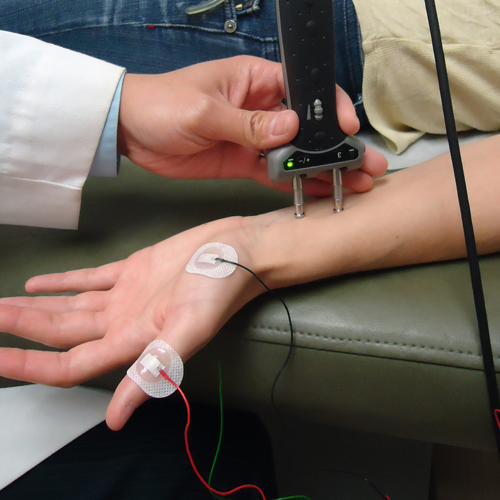- Home
- Patient Care
- Services
- Hand & Microsurgery
- Overview
- Brachial Plexus Injury
Brachial Plexus Injury
 Download PDF
Download PDF
The brachial plexus is the term for a group of nerves that run from the neck and along the shoulder. A brachial plexus injury affects the nerves in the shoulder, elbow, forearm, wrist, and fingers.
Cause of Brachial Plexus Injuries
Brachial plexus injuries can occur from any type of accident or trauma, but most often occur after car accidents, motorcycle accidents, ATV accidents, falls, or injuries such as stabbing or gunshot wounds. In addition to treating adult brachial plexus injuries, we also treat birth brachial plexus palsy caused by childbirth
Symptoms
Brachial plexus injuries may cause symptoms such as:
- Inability to feel and touch objects
- Inability to move parts of the shoulder, elbow, wrist, hand, and fingers
- Burning pain or tingling in the shoulder, elbow, forearm, wrist or finger
Diagnosis

When to refer to an orthopedic surgeon?
Ideally, a patient would begin seeing an orthopedic surgeon within a few weeks or months after the injury. It is especially important for a patient to be evaluated if their injury is not recovery sufficiently, even if it seems to early to consider surgery. Surgical intervention, if needed, must be done in a timely manner.
At our Multidisciplinary Complex Nerve Clinic, an evaluation begins with a detailed interview and physical examination. We will also request electrical studies to get an additional sense of which nerves and muscles are affected, and how severely they are affected. Imaging tests such as an MRI or a CT scan may be ordered depending on the case. Once we have reviewed the collective information, an overall treatment plan will be discussed with the patient.
Treatment Options
Treatment options can vary, depending upon the severity of the injury, and/or how long it has been since the injury.
- Observation to determine if the nerves will recover on their own
- Physical therapy to strengthen muscles and keep joints limber
- Surgery to repair or reconstruct the nerves and ultimately improve muscle function
Surgery
Determining if surgery is necessary for a brachial plexus injury is based on many factors, and the decision will be made after a careful discussion with the patient. A combination of the surgeries listed below are often used to help restore function.
Direct repair: in some cases, a direct nerve repair is possible.
Nerve grafting: the non-working portion of the nerve is removed and replaced with a segment of nerve from another part of the body.
Nerve transfers: part of a working nerve is “borrowed” to serve the function of an injured nerve.
Scar tissue removal and nerve decompression: the scar surrounding from the nerve is removed and the nerve is decompressed from any tight surrounding tissues.
Muscle transfer: healthy and working muscle (with its own blood supply and nerve supply) can be transferred from another part of the body (such as the back or thigh) to the injured arm to help with providing motion.
Tendon transfer: healthy and working tendons can be transferred within the arm to help with motion of joints that are close by.
Recovery
Brachial plexus injuries are life-altering, traumatic injuries that create a “new normal” for patients.
Recovery typically takes several months to several years, but depends upon the severity of the injury and other factors. Every patient and every injury is different, so we have an honest discussion with our patients about what their individual expectations are for recovery, including how much recovery and how long it will take.
About Our Team
Brachial plexus injuries should be evaluated and treated by an orthopedic hand surgeon, with specialized training in treating brachial plexus injuries, to help patients recover sooner and more completely. At Washington University Orthopedics, we offer a Multidisciplinary Complex Nerve Clinic that is dedicated to the treatment of patients with complex nerve injuries, including brachial plexus.
More Information